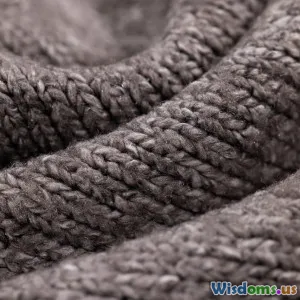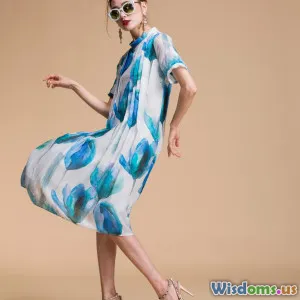
Analyzing Sustainable Materials On The Latest Runways
7 min read Explore how sustainable materials are revolutionizing fashion runways with eco-friendly innovations and cutting-edge biodegradable textiles. (0 Reviews)
Analyzing Sustainable Materials On The Latest Runways
Introduction
Fashion runways have long epitomized glamour, creativity, and innovation. Yet, behind their shimmering lights and captivating designs lies a critical challenge: sustainability. More than ever, the fashion industry is under scrutiny for its environmental impact, leading designers and brands to embrace sustainability not just in rhetoric but tangibly through material choices. This article delves deep into how sustainable materials shape the latest runways, transforming both aesthetic and ethical considerations in fashion.
Why Sustainable Materials? The Environmental Imperative
The fashion industry is responsible for approximately 10% of global carbon emissions and substantial water consumption. According to the Ellen MacArthur Foundation, over 85% of textiles go to waste globally each year—much ending in landfills or incineration. These alarming stats have catalyzed a movement toward sustainable sourcing and manufacturing.
Materials are the backbone of this revolution; transitioning from petroleum-based synthetics and chemically heavy fabrics to eco-friendly, biodegradable, and recycled alternatives marks an essential step. Sustainable fabrics reduce carbon footprints, limit toxic chemical use, and often enable circular economies through recyclability or biodegradability.
Insight from Stella McCartney, pioneer of sustainable fashion, highlights this: "Materials are the DNA of our creations. When we rethink what’s under the surface, we envision a future where fashion is responsible and regenerative."
Cutting-Edge Sustainable Materials on the Runway
1. Recycled Fibers: Fashion’s Reinvention Loop
Example: Adidas x Parley for the Oceans showcased how plastic waste harvesting transforms ocean plastics into high-performance yarns utilized in shoes and sportswear. The Parley Ocean Plastic® collection features uppers made from 11 ocean-bound plastic waste bottles per pair.
Similarly, luxury houses like Gabriela Hearst integrate recycled wool and nylon in couture, promoting waste minimization while maintaining refined aesthetics. These fibers exemplify circularity, turning discarded materials into covetable runway pieces.
2. Plant-Based and Biodegradable Textiles
The rise of bioplastics and plant-based fibers is a promising alternative to synthetic polyester and nylon. On recent New York Fashion Week stages, labels like Marine Serre introduced garments crafted from regenerated leather made from mycelium — mushroom roots — showcasing durability paired with full biodegradability.
Brands like Nanushka employ Tencel™ Lyocell, a fabric derived from sustainably harvested eucalyptus trees processed in a closed-loop system with minimal chemical waste and water use. The fabric's soft drape and breathability marry eco credentials with luxury feel.
3. Innovative Natural Fibers: Hemp, Piñatex, and Beyond
Traditional natural fibers are being revisited under a sustainability lens. Hemp, for example, grows quickly without pesticides and requires less water compared to cotton. Fashion commentary by Vogue Business lauds recent collections incorporating hemp blends for their strength and lower environmental toll.
Piñatex, a leather alternative made from pineapple leaf fibers, received spotlight at London Fashion Week within accessories and statement pieces by brands like HACKETT LONDON. It offers a cruelty-free, renewable, and compostable option often overlooked in mainstream luxury.
The Industry’s Shift and Challenges
While runway showcases hint at progress, embedding sustainable materials industry-wide is complex.
-
Supply Chain Transparency: Brands need rigorous traceability to confirm sustainability claims, which often requires technological investments like blockchain or certifications (e.g., GRS – Global Recycle Standard).
-
Cost and Scalability: Sustainable materials currently can carry higher production costs, affecting accessibility for mass markets. However, as demand surges, prices are expected to normalize.
-
Design Adaptations: Designers experiment to balance performance, texture, and aesthetics, sometimes grappling with unfamiliar material behaviors compared to conventional fabrics.
Despite these hurdles, brands are increasingly setting ambitious targets. For instance, Burberry pledges to embed 100% sustainable materials in all products by 2025, highlighting industry-wide momentum.
Consumer Impact and Future Outlook
Sustainable materials' runway debut impacts consumers, raising awareness and demand for eco-conscious apparel. Transparent storytelling reinforces purchasing choices aligned with values.
Looking ahead, scientific advancements like lab-grown textiles and biodegradable synthetics hold transformative potential. Collaborative initiatives such as the Sustainable Apparel Coalition foster shared practices, uniting stakeholders towards a greener future.
Moreover, circular fashion models—rentals, resale, and upcycling—often hinge on material durability and recyclability, emphasizing the crucial role of sustainable materials.
Conclusion
Analyzing sustainable materials featured on the latest runways reveals a vibrant ecosystem where creativity intersects with responsibility. From recycled ocean plastics to plant-based leathers, these materials signal a paradigm shift. While challenges remain in scaling and standardizing sustainability, industry leaders and innovative startups are propelling the fashion world toward an environmentally respectful future.
Ultimately, fashion enthusiasts, designers, and consumers alike bear a collective role in fostering demand for sustainable textiles, inspiring an industry where style and stewardship coexist harmoniously.
"Sustainability is not a trend, but the new foundational aesthetic," — Anna Wintour, Vogue Editor-in-Chief.
Embracing this ethos, the runway seizes its role as the stage that not only dazzles but drives meaningful change.
References
- Ellen MacArthur Foundation, "A New Textiles Economy", 2017
- Adidas x Parley for the Oceans official campaign, 2023
- Vogue Business, Sustainable Fibers Report, 2024
- Burberry Corporate Responsibility Report, 2023
- Interviews with Stella McCartney and Anna Wintour, Vogue, 2023
This article invites readers to look beyond fashion's surface, understanding the power of sustainable materials to reshape runways and our planet.
Rate the Post
User Reviews
Popular Posts




















